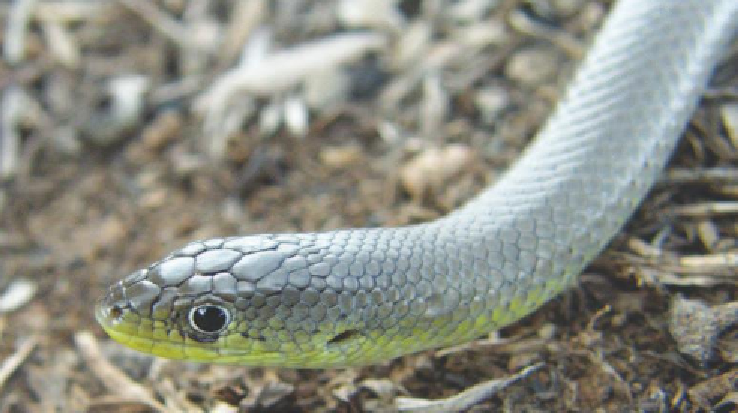Biology Reference
In-Depth Information
Figure 3.19:
Olive Legless Lizard. (Photo by Damian Michael)
trees and shrubs are sufficiently well established to be able to withstand being
badly damaged by livestock.
Fencing is one of the usual ways to either exclude grazing or control grazing
pressure in plantings. Well-constructed fences may last for 15-20 years - about the
same amount of time since many plantings in agricultural areas were first
established. Maintaining fences or replacing them with new ones is therefore
critical to maintaining the suitability of planted areas for wildlife. Where possible,
it is important not to use barbed wire on the top strand of a fence around a
planting. Many kinds of animals ranging from bats to marsupial gliders and birds
can become entangled in barbed wire and die (see Chapter 2). For those fences
where it is not feasible to exchange barbed wire for straight wire, it can be useful to
enclose barbed wire in a poly-pipe covering or tie flagging tape to the barbed
strand to increase visibility.
Dead trees, shrubs and fallen logs are critical habitat for many kinds of native
animals and they should not be removed from plantings. For example, dead trees
are often used as nesting sites by the Superb Parrot and the Squirrel Glider.
12, 24, 25
Similarly, dead shrubs in plantings form an important part of the habitat of the
White-browed Woodswallow. Bird species richness is highest in plantings where
fallen branches and large logs are retained. Logs can play
many key ecological roles for biodiversity in plantings,
ranging from providing places for birds to perch and call
(e.g. Rufous Songlark), to facilitating animal foraging
through providing habitat for invertebrate prey.
3, 15
Maintain or replace fences
around plantings to limit
the risks of overgrazing and
trampling

